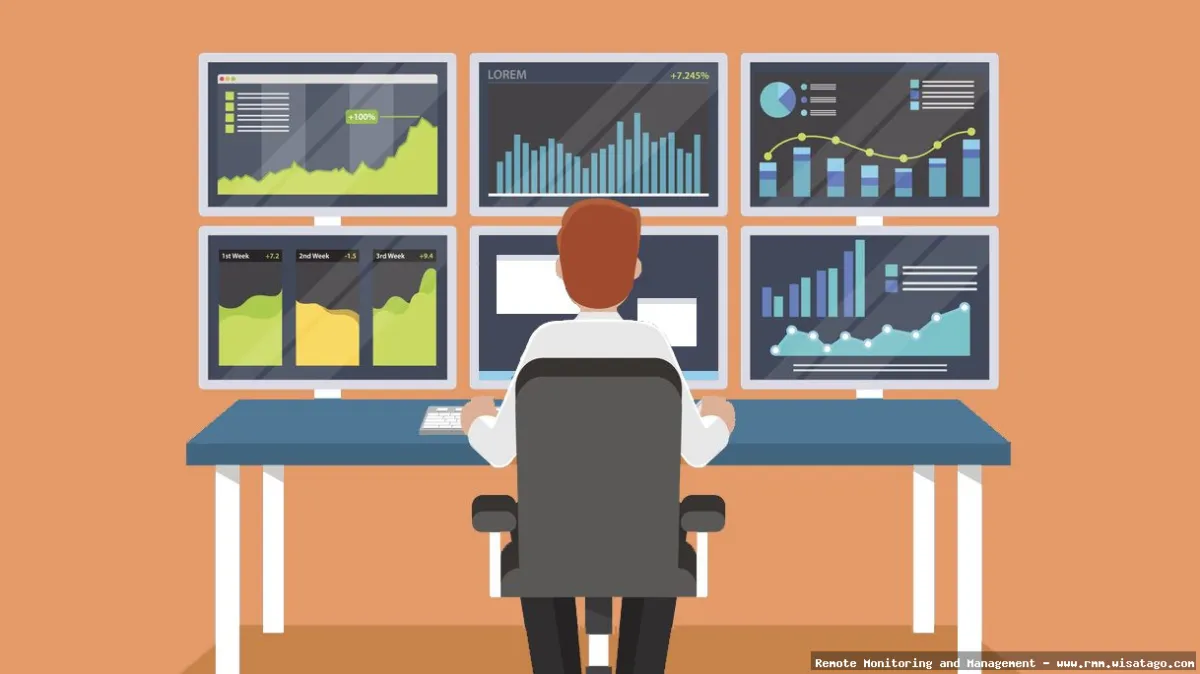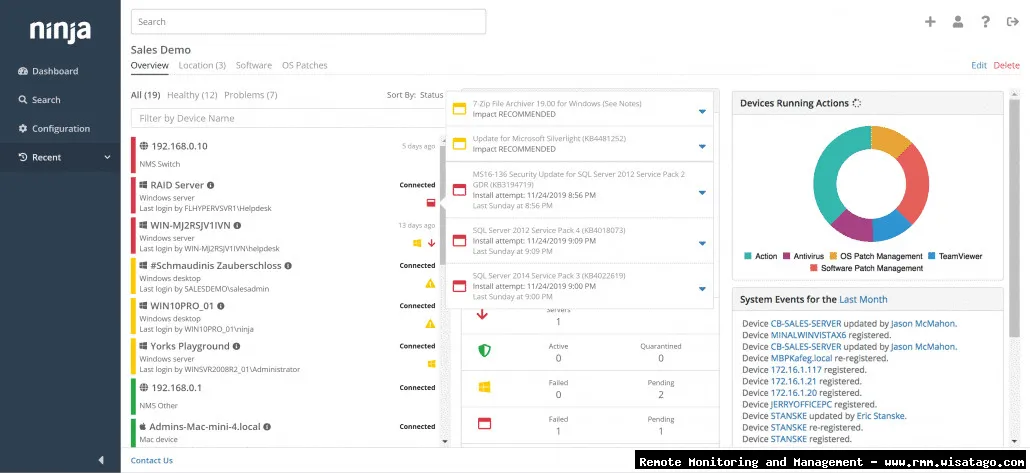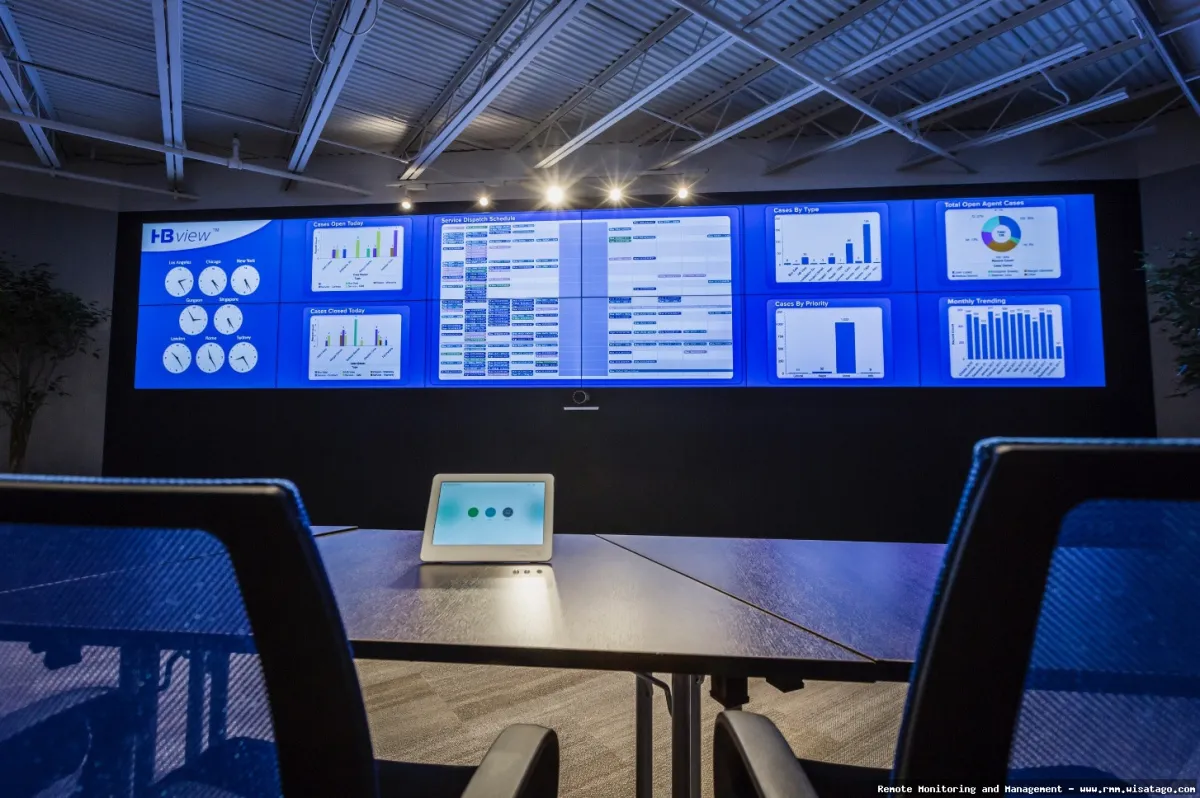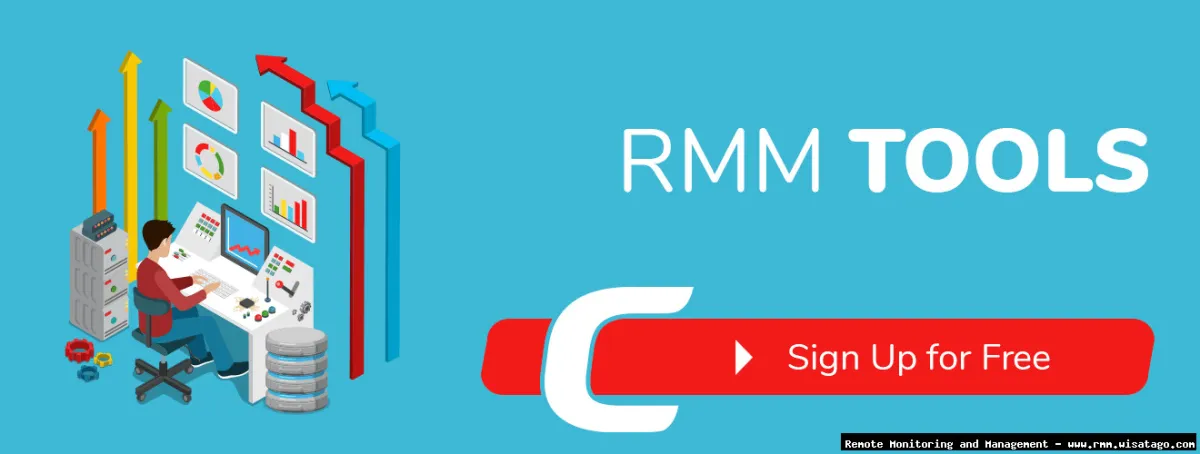Alright, let’s talk RMM. As IT professionals, we’re constantly juggling a million things – keeping networks secure, troubleshooting user issues, managing software updates, and ensuring everything runs smoothly. It’s a demanding job, and frankly, without the right tools, it’s a recipe for burnout. That’s where Remote Monitoring and Management (RMM) systems come into play. They’re like a central command center for your entire IT infrastructure, allowing you to proactively manage and maintain your systems from a single pane of glass. But not all RMMs are created equal.
One of the biggest challenges IT teams face is documentation. Keeping track of configurations, passwords, procedures, and network diagrams can be a nightmare. It often ends up scattered across spreadsheets, shared drives, and even sticky notes! This lack of centralized, up-to-date documentation can lead to inefficiencies, security vulnerabilities, and increased downtime. Imagine trying to troubleshoot a critical server issue without knowing the current configuration or who has access. It’s a disaster waiting to happen. This is why RMM systems with built-in documentation management are becoming increasingly popular. They offer a powerful solution to this common problem, streamlining IT operations and improving overall efficiency.

This article will dive deep into RMM systems with built-in documentation management. We’ll explore what they are, the key features to look for, the benefits they offer, and the challenges you might encounter when implementing them. Think of this as your complete guide to understanding and leveraging this powerful tool to transform your IT management practices. We’ll cover real-world examples, practical tips, and everything you need to know to make an informed decision about whether an RMM with integrated documentation is right for your organization.
What is an RMM System with Built-in Documentation Management?
At its core, an RMM (Remote Monitoring and Management) system is a software platform designed to help IT professionals remotely monitor and manage their clients’ or their own internal IT infrastructure. This includes servers, workstations, network devices, and other endpoints. RMMs provide a centralized view of all these systems, allowing you to track performance, identify potential issues, and proactively resolve problems before they impact users.
Now, add documentation management into the mix. An RMM with built-in documentation management goes beyond just monitoring and alerting. It provides a centralized repository for storing and managing all your critical IT documentation, directly within the RMM platform. This means that instead of searching through multiple systems to find the information you need, you can access it directly from the same tool you use to monitor and manage your infrastructure. This integration is a game-changer for efficiency and accuracy.

Key Features of RMM Systems with Integrated Documentation
When evaluating RMM systems with built-in documentation management, there are several key features to consider:
- Centralized Documentation Repository: This is the foundation of any good system. It should provide a secure and organized space to store all your IT documentation, including passwords, configurations, procedures, network diagrams, and more.
- Role-Based Access Control (RBAC): Ensure that sensitive information is protected by implementing granular access controls. RBAC allows you to define who can view, edit, or delete specific documents based on their role within the organization.
- Version Control: Documentation is constantly evolving. Version control allows you to track changes, revert to previous versions if needed, and maintain a clear audit trail. This is crucial for compliance and troubleshooting.
- Search Functionality: A powerful search engine is essential for quickly finding the information you need. The search should be able to search across all documents, including metadata and content.
- Integration with Monitoring and Alerting: The ability to link documentation to specific devices or alerts is incredibly valuable. For example, if you receive an alert about a server outage, you should be able to quickly access the documentation related to that server, including its configuration, troubleshooting steps, and contact information.
- Templates and Standardization: Templates can help you standardize your documentation and ensure consistency across all your systems. This makes it easier to maintain and update your documentation over time.
- Automated Documentation Generation: Some advanced RMM systems can automatically generate documentation based on system configurations. This can save you a significant amount of time and effort.
- Password Management Integration: A secure password manager integrated directly into the RMM platform is a huge security win. It allows you to securely store and manage passwords for all your systems and applications, and easily access them when needed.
Benefits of Using an RMM System with Built-in Documentation
The benefits of using an RMM system with integrated documentation are numerous and can significantly impact your IT operations:
- Improved Efficiency: Having all your IT documentation in one place eliminates the need to search through multiple systems, saving you time and improving efficiency. Technicians can quickly access the information they need to resolve issues, reducing downtime and improving customer satisfaction.
- Reduced Risk: Centralized documentation helps reduce the risk of errors and inconsistencies. With up-to-date information readily available, technicians are less likely to make mistakes during troubleshooting or maintenance.
- Enhanced Security: Secure password management and role-based access control help protect sensitive information from unauthorized access. This reduces the risk of data breaches and other security incidents.
- Better Compliance: Centralized documentation makes it easier to comply with industry regulations and internal policies. You can easily track changes, maintain an audit trail, and demonstrate compliance to auditors.
- Improved Collaboration: Centralized documentation facilitates collaboration among IT team members. Everyone has access to the same information, ensuring that everyone is on the same page.
- Faster Onboarding: New IT team members can quickly get up to speed with your IT infrastructure by accessing the centralized documentation repository. This reduces the time it takes to onboard new employees and improves their productivity.
- Reduced Downtime: Faster troubleshooting and proactive maintenance lead to reduced downtime and improved system availability. This translates to increased productivity and reduced business disruption.
- Simplified Audits: Having all your documentation in one place makes audits much easier. You can quickly generate reports and provide auditors with the information they need.
Challenges of Implementing an RMM System with Documentation Management
While the benefits of RMM systems with built-in documentation management are significant, there are also some challenges to consider during implementation:

- Data Migration: Migrating existing documentation from various sources to the new RMM system can be a time-consuming and complex process. You need to plan carefully and ensure that all your data is accurately transferred.
- Data Cleansing: Before migrating your data, it’s important to cleanse it and remove any outdated or inaccurate information. This will ensure that your documentation repository is accurate and reliable.
- User Adoption: Getting your IT team to adopt the new RMM system and consistently use the documentation features can be a challenge. You need to provide adequate training and support to ensure that everyone understands how to use the system effectively.
- Maintaining Accuracy: Documentation is only valuable if it’s accurate and up-to-date. You need to establish processes for regularly reviewing and updating your documentation to ensure that it remains current.
- Cost: RMM systems with built-in documentation management can be more expensive than traditional RMM systems. You need to carefully evaluate the cost and benefits to determine if it’s the right investment for your organization.
- Integration Complexities: Integrating the RMM system with other existing tools, such as ticketing systems or CRM platforms, might present some technical hurdles. Careful planning and potentially custom scripting may be required.
Choosing the Right RMM System with Documentation Management
Selecting the right RMM system with built-in documentation management is a critical decision. Here are some factors to consider:
- Your Specific Needs: What are your specific documentation requirements? What types of documentation do you need to store and manage? What level of access control do you need?
- Your Budget: How much are you willing to spend on an RMM system? Be sure to consider both the initial cost and the ongoing maintenance costs.
- The Vendor’s Reputation: Choose a reputable vendor with a proven track record. Read reviews and talk to other IT professionals who have used the system.
- Ease of Use: The RMM system should be easy to use and intuitive. Your IT team should be able to quickly learn how to use the system and effectively manage your documentation.
- Scalability: The RMM system should be able to scale to meet your growing needs. As your organization grows, you’ll need to be able to add more users and devices to the system.
- Support: The vendor should provide excellent technical support. You should be able to easily contact support if you have any questions or problems.
- Integration Capabilities: Ensure the RMM system integrates well with your existing IT infrastructure and other tools you use.
- Security Features: Prioritize security. The RMM system should have robust security features to protect your sensitive data.
Real-World Use Cases
Let’s look at some real-world examples of how an RMM system with built-in documentation management can be used:
- Troubleshooting a Server Outage: When a server goes down, a technician can quickly access the documentation related to that server, including its configuration, troubleshooting steps, and contact information. This allows them to quickly diagnose and resolve the problem, minimizing downtime.
- Onboarding a New Client: When onboarding a new client, an IT service provider can quickly document their IT infrastructure, including their network configuration, user accounts, and software applications. This allows them to quickly get up to speed with the client’s environment and provide effective support.
- Auditing Compliance: During an audit, an IT manager can easily generate reports and provide auditors with the information they need to demonstrate compliance with industry regulations.
- Managing Passwords: An IT team can use the integrated password manager to securely store and manage passwords for all their systems and applications. This eliminates the need for insecure password storage methods, such as spreadsheets or sticky notes.
- Responding to Security Incidents: When a security incident occurs, the IT team can quickly access documentation on incident response procedures, contact information for security personnel, and system configurations to contain and remediate the situation effectively.
Conclusion
RMM systems with built-in documentation management offer a powerful solution for streamlining IT operations, improving efficiency, and enhancing security. While there are challenges to consider during implementation, the benefits far outweigh the risks. By carefully evaluating your needs and choosing the right RMM system, you can transform your IT management practices and improve the overall performance of your organization. Don’t underestimate the power of well-organized and readily accessible documentation – it’s a critical component of a well-managed IT environment.

Investing in an RMM solution with robust documentation features is not just about adopting a new tool; it’s about embracing a proactive and organized approach to IT management. By centralizing your documentation and integrating it with your monitoring and management processes, you can empower your IT team to work more efficiently, reduce risks, and deliver better service to your users. It’s a win-win for everyone involved.
So, take the time to research your options, consider your specific requirements, and choose an RMM system that will help you take your IT management to the next level. Your future self (and your IT team) will thank you for it!
Conclusion
In conclusion, the integration of robust documentation management features directly within RMM systems represents a significant evolution in how MSPs and IT professionals manage their clients’ infrastructure. By centralizing documentation alongside core monitoring and management functionalities, these systems streamline workflows, improve efficiency, and ultimately enhance the quality of service provided. The ability to quickly access up-to-date information on configurations, procedures, and troubleshooting steps is no longer a nice-to-have, but a critical requirement for delivering consistent and reliable IT services in today’s complex environment. For more information, you can refer to RMM as an additional resource.
As we’ve explored, the benefits of RMM systems with built-in documentation extend beyond simple convenience. They foster better collaboration, reduce errors, and empower technicians to resolve issues faster. If you’re looking to optimize your IT service delivery, improve your team’s efficiency, and ensure your clients receive the best possible support, we encourage you to explore the RMM solutions discussed and consider how integrating documentation management can transform your operations. Perhaps a demo of a system like NinjaOne or Datto RMM would be a great first step. The right RMM system can unlock substantial productivity gains and elevate your IT management capabilities to new heights.
Frequently Asked Questions (FAQ) about RMM Systems with Built-in Documentation Management
What are the key benefits of using an RMM (Remote Monitoring and Management) system that has built-in documentation management capabilities?
Using an RMM system with built-in documentation management offers several advantages for managed service providers (MSPs) and IT professionals. Firstly, it streamlines workflows by centralizing critical information about clients, systems, and procedures within the same platform used for monitoring and management. This eliminates the need to switch between different applications, saving time and improving efficiency. Secondly, integrated documentation ensures that technicians have quick access to up-to-date configurations, passwords, and troubleshooting steps, leading to faster problem resolution and reduced downtime. Finally, it enhances security and compliance by providing a secure and auditable repository for sensitive data, ensuring that information is readily available for audits and compliance checks.
How does an RMM with integrated documentation management help improve technician efficiency and reduce onboarding time for new employees?
An RMM platform with integrated documentation management significantly boosts technician efficiency. By having client and system documentation directly accessible within the RMM interface, technicians can quickly find the information they need to resolve issues without searching through separate databases or files. This reduces the time spent on troubleshooting and allows them to handle more requests. For new employees, the learning curve is significantly reduced. Instead of spending weeks familiarizing themselves with various systems and processes, they can access detailed documentation within the RMM, enabling them to become productive much faster. This structured knowledge base ensures consistency in service delivery and reduces the risk of errors caused by lack of information, ultimately leading to better customer satisfaction.
What types of documentation can I effectively manage within an RMM system that offers documentation management features?
An RMM system equipped with documentation management allows you to manage a wide range of critical documentation. This includes client-specific information like network diagrams, contact details, service level agreements (SLAs), and standard operating procedures (SOPs). You can also store system-level documentation such as server configurations, software licenses, hardware specifications, and user credentials. Furthermore, the system can be used to maintain internal documentation like troubleshooting guides, knowledge base articles, and training materials. By centralizing all these documents within the RMM, you create a single source of truth for your IT environment, ensuring that all relevant information is easily accessible and consistently updated. This comprehensive approach improves overall efficiency, reduces errors, and enhances the quality of service provided to clients.